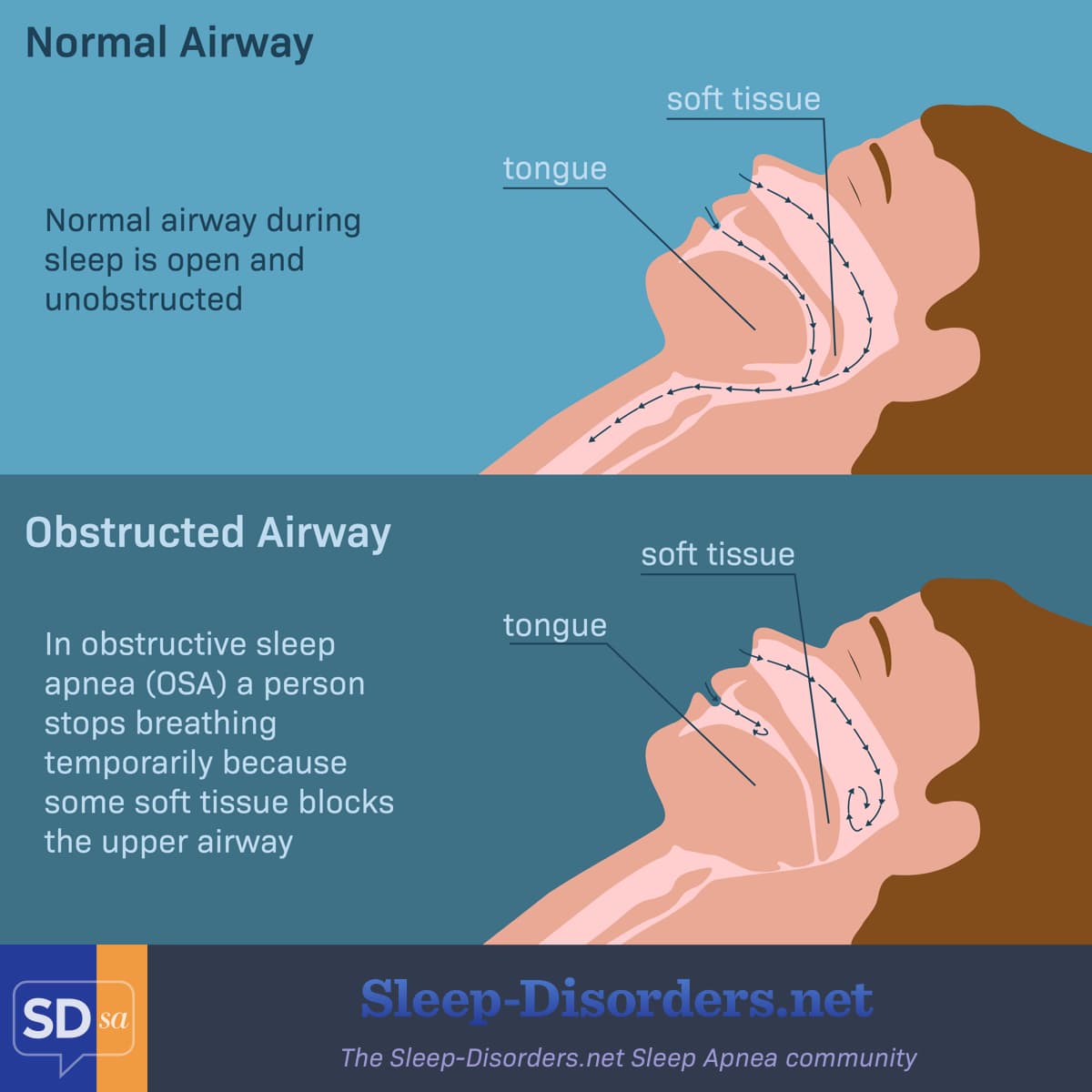Types and Causes of Sleep Apnea
Reviewed by: HU Medical Review Board | Last reviewed: June 2020 | Last updated: May 2023
The most common breathing-related sleep disorder is obstructive sleep apnea. With sleep apnea, breathing is interrupted for at least 10 seconds during sleep. People with sleep apnea often snore loudly or make gasping and choking noises in their sleep.1,2
Sleep apnea can cause low oxygen levels in the blood and unrestful sleep. Left untreated, it can lead to serious health issues, such as high blood pressure, heart disease, diabetes, kidney disease, depression, and more. At least 18 million people in the U.S. have sleep apnea.3
Types of sleep apnea
There are a few types of sleep-related breathing disorders, including:4
Obstructive sleep apnea
Obstructive sleep apnea (OSA) is the most common type of sleep apnea. In this type of sleep apnea, a person stops breathing temporarily because some soft tissue blocks the upper airway. This causes heavy snoring, choking, and gasps while sleeping. The person wakes up briefly all night to reopen the airway, often without realizing it. This results in poor sleep that causes daytime sleepiness and fatigue. Many people wake up with a morning headache. Between 5 and 20 percent of the U.S. adult population has OSA.5
Figure 1. What happens during obstructive sleep apnea?
Childhood obstructive sleep apnea
Between 1 and 3 percent of preschoolers develop sleep apnea between ages 2 and 6. This type of sleep apnea may occur as the adenoids and lymph nodes grow. In older children who snore, as many as 10 to 20 percent may have OSA.5
Central sleep apnea
Central sleep apnea (CSA) is rare. It occurs when breathing stops or slows during sleep. CSA is caused when the body fails to signal the brain to breathe. It is not caused by a block to the airway. CSA occurs in fewer than 10 percent of people with sleep apnea. It is most common in people with heart failure, people taking opioids long-term, and people living at high altitudes.6
Sleep-related hypoventilation disorders
There are 2 types of sleep-related hypoventilation syndromes (SRHS), primary and comorbid. These syndromes occur when proper gas exchange between the lungs and the blood fails to happen during sleep. This results in too much carbon dioxide or low oxygen levels in the blood. This condition is rare.
What causes obstructive sleep apnea (OSA)?
When you sleep, the muscles in the upper airway relax. This causes the tissues in the back of the throat to collapse or the tongue to fall back. This limits the amount of air reaching your lungs. Snoring is caused by the tissue moving back and forth as you breathe.7
Risk factors for obstructive sleep apnea
Certain groups of people have a greater risk of developing obstructive sleep apnea, including:8
- Men
- Those who are overweight or obese
- Anyone over age 40
- People with a small airway, large tongue, or large tonsils
- People with a recessed chin, small jaw, or large overbite
- Men with neck over 17 inches around
- Women with a neck over 16 inches around
- Those who smoke or drink alcohol
- Military veterans
- African Americans, Pacific Islanders, Asians, and Hispanics
- Those with a family history of sleep apnea or heavy snoring
Some health conditions also increase a person’s chances of developing sleep apnea. These conditions include:8
- Congestive heart failure
- Pregnancy (especially the last trimester)
- End-stage kidney disease
- High blood pressure, heart disease, atrial fibrillation
- Stroke
- Type 2 diabetes
- Lung disease
- Thyroid disease
- Polycystic ovary syndrome
- Parkinson’s disease
- Nasal congestion
- Floppy eyelid syndrome
The good news is that sleep apnea easy to diagnose and is very treatable.
